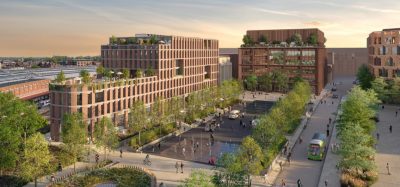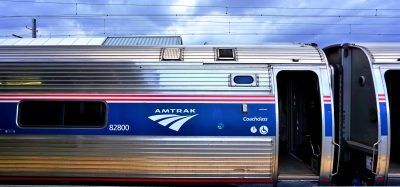The Irish rail network transformation
Posted: 3 November 2005 | | No comments yet
Fast, frequent Intercity services operated by modern rolling stock. A commuter network which maximises capacity and plays the fullest role possible in meeting the transport needs of the Greater Dublin area. Enhanced local services. These are the three strands of development in what is the most exciting era for Ireland’s railways in generations. The development […]
Fast, frequent Intercity services operated by modern rolling stock. A commuter network which maximises capacity and plays the fullest role possible in meeting the transport needs of the Greater Dublin area. Enhanced local services. These are the three strands of development in what is the most exciting era for Ireland’s railways in generations.
The development is all the more significant as it follows what had been a sustained period of underinvestment in Iarnród Éireann and its forerunner operators of Ireland’s rail network. For decades, the railways were starved of investment, as the road network took the lion’s share of funding. With the economic boom in Ireland in the late 1990s leading to the road system being unable to cope, funding returned, at record levels.
Safety
Our first priority when funding returned had to be safety investment – since 1999, a complete renewal of the national radial network has been completed, along with signalling upgrading across most major routes, the renewal of hundreds of bridges, upgrading or closing of hundreds of level crossings and other critical safety work.
We are proud of our rail safety record, but guard against complacency on safety, which will always be our number one priority. With over €700 million invested specifically in safety since 1999, we now have a modern network to allow us to sustain that record.
Intercity
Nationally, the next phase of investment is a major modernisation of the Intercity fleet. Currently, Iarnród Éireann has one of the oldest Intercity fleets in Europe, with over half the carriages in service more than 30 years old. Within three years, we will have one of the most modern fleets in Europe, and will have transformed the quality, comfort and frequency of services on our core network.
Currently, we are taking delivery of 67 new Intercity carriages from CAF of Spain, which will enter service on the Cork-Dublin route, by some distance our busiest line, during 2006. The new €117 million fleet will be the most modern and most comfortable trains ever to operate on our network, featuring:
- Sleek new design and livery
- Greatly improved accessibility for mobility-impaired customers
- On-board audio-visual information
- Modern air-conditioning and CCTV systems for comfort and safety
- New catering facilities
- Electronic route maps
- Additional features in 1st Class, including adjustable seating, in-seat radio and music, reading light, table lamps
The new fleet will transform the timetable on the Cork-Dublin service for our record numbers of customers, enabling a move from eight services each way per day to an hourly clockface timetable by late 2006. This will see capacity on the route double.
Other routes are also set to benefit through increased frequency, including Sligo-Dublin and Kerry-Dublin services from our new timetable in December 2005. Furthermore, a €262 million order for 120 Intercity railcar carriages has been placed with Mitsui of Japan, in partnership with Rotem of Korea and Tokyu Car of Japan.
These trains, which will enter service in 2007 and 2008, will facilitate major frequency, capacity and comfort improvements on routes such as Waterford-Dublin, Kerry-Dublin, Limerick-Dublin, Galway-Dublin and Mayo-Dublin. Iarnród Éireann is already one of the fastest growing passenger railways in Europe, a league table we are set to dominate in the years ahead.
Greater Dublin
One of the key challenges we face is in the ever-expanding Greater Dublin commuter area. Nowhere is the economic transformation of Ireland’s economy as evident as in the Dublin and wider Leinster area. The house price boom has driven Ireland’s young workforce and their families to seek out homes further and further from the centre of Dublin, and strong transport links are a key factor in the popularity of areas.
This presents us with major challenges to quickly implement the fleet and network improvements needed to meet the demands from this growing population. The three fastest growing population corridors in the entire country are along our three busiest commuter routes into Dublin: the Northern line from Dundalk and Drogheda to Dublin’s Connolly and Pearse Stations; the Maynooth line from Maynooth in North Kildare to Connolly and Pearse; and the Kildare line which operates from Dublin’s Heuston Station to Kildare town and longer distance commuter destinations such as Portlaiose and Carlow.
To date, we have maximised the capacity of our existing network to meet the increased demand.
The DART (Dublin Area Rapid Transit), is an electrified inner commuter service, operating from Howth and Malahide north of the city to Bray and Greystones to the south, in Co Wicklow. It is unquestionably the country’s greatest public transport success story, and has seen daily passenger numbers grow from 35,000 in its early days in 1984 to over 90,000 today. Remarkably, this passenger growth was delivered using only the original 80 carriages until 2000. Since then, we have practically doubled the size of the fleet to 154 carriages.
Furthermore, we are now completing the DART Upgrade project, a ?176 million investment that will allow the DART to continue to grow. We have extended platforms across all 30 stations to eight-carriage length, from a previous maximum of six; we have renewed all overhead wires; enhanced power supply; and transformed stations to ensure the best possible standards of accessibility for mobility and sensory impaired customers.
Since 1998, we have increased our dedicated commuter fleet from a mere 17 units to 144, replacing unsuitable Intercity-style trains with high-capacity commuter railcars. A further 36 carriages are about to enter service, but it is a sign of the huge demand for quality rail services that exists that each time we introduce additional capacity on any route, it is filled literally in weeks.
Dublin Integrated Rail Plan
So we must continue. Our next projects, part of the Dublin Integrated Rail Plan, include:
- City centre re-signaling: a key project to allow more trains to operate through the Connolly-Pearse Station ‘bottleneck’. Signaling currently restricts frequency on this section to 12 trains per hour per direction. Our re-signaling will increase this to 16 trains per hour per direction, primarily to benefit the northern commuter route
- New city centre terminal: we plan to develop a new city centre terminal station in Dublin’s booming Docklands area, to facilitate increased frequency on the Maynooth line
- Kildare Route Project: we plan to four-track key sections of the Kildare line, to provide two dedicated lines for commuter services and two dedicated lines for Intercity and regional services, enabling increased frequency of trains
- The rebuilding and reopening of a spur line off the Maynooth line to Dunboyne and a major motorway-linked Park and Ride station in Co Meath
- New stations to serve major new housing and commercial development in the Greater Dublin area
Yet such is the growth in population the country and the region is facing, that we must go further still than this – these projects will provide capacity to sustain us to the year 2010, but not far beyond.
The Interconnector – the ‘Missing Link’
Therefore, we propose the Interconnector, the ‘missing link’ in Dublin’s rail transport system and the final stage of the Dublin Integrated Rail Plan. A €1.3 billion underground rail tunnel, it would provide a second high-capacity DART line through the heart of the city centre, allowing increased frequency on all routes, and integrating all modes of rail based transport – DART, Commuter, Intercity and our public transport partners operating the light rail system LUAS – into a cohesive network.
Together with other elements of the Dublin Integrated Rail Plan, it will deliver a quadrupling of passenger journeys annually on our DART and Commuter services, from 25 million today to over 100 million, the dramatic modal shift the city and region’s gridlocked communities require.
The Interconnector would allow us to expand electrification to our commuter routes, and operate Northern line services to enter the tunnel at Docklands, continuing to Pearse (where they would link with what would be the Maynooth/Dunboyne to Bray/Greystones DART line); to St Stephen’s Green in the heart of the city centre (linking with LUAS green line) to Heuston (linking to Intercity and long-distance Commuter services, and the LUAS red line), and allow trains to continue on towards Kildare.
The Irish Government is currently finalising plans for a 10 year multi-billion infrastructure plan to meet the needs of this vibrant, dynamic country and economy. We are confident that the Interconnector, which will ensure that the communities living on the routes we serve, will be adopted as part of this plan.
Regional
It is not only Dublin where growth is taking place. We are about to commence the reopening of the Cork- Midleton commuter line in Co Cork, a key part of the second city’s development plans. Increased Intercity services will also facilitate commuter links to and from Galway, where last year we commenced a commuter-type service from Athlone.
Freight
We also operate rail freight services, which have faced challenging times of late. However, we have made great strides in our plan to return rail freight to profitability. We have reduced costs and withdrawn from unviable businesses, to allow us to develop our profitable traffics, and seek new commercially viable traffics. Uniquely in Western Europe, our rail freight service operates without state support or environmental-based incentives to customers.
Conclusion
The transformation, therefore, in the fortunes of Ireland’s rail network is as dramatic as it is welcome. From a cash and investment starved network in the early 1990s to one of the fastest growing passenger railways in Europe, and a key driver of the prosperity this country is experiencing, it is a time of great opportunities and challenges for our 5,000 strong team in Iarnród Éireann. They are opportunities and challenges which we relish, as we move into the future.






